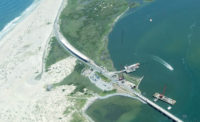Days after North Korea said it had conducted a hydrogen bomb test, on Jan. 6, the U.S. government has tried to reassure the world that the evidence belies North Korea’s claims.
“Our analysis….is not consistent with the North Korean claims of a hydrogen bomb test,” said Pentagon press secretary Peter Cook.
But China, Japan and South Korea, which are North Korea’s neighbors, continued to be worried.
“The test has posed a serious challenge for China because it was conducted very close to the border,” Jia Xiudong, a researcher at the China Institute of International Studies, said.
The test caused an earthquake measured at 5.1 in North Korea but the impact was much less on the Chinese side of the border, which is 100 kms. from the test site. The device tested must have been much less lethal than a hydrogen bomb, scientists said. Underground tests conducted by different countries in the past usually resulted in quakes 6.9 to 7.0 on the Richter scale.
Seismologists across the world are convinced the earthquake was caused by the test and it was not a natural one.
"The first indicator is the characteristic in which the waves are radiated," Torsten Dahm, head of the department for physics of earthquakes and volcanoes at the German Research Center for Geosciences in Potsdam (GFZ) said. "That gives us a strong signal that is different from a tectonic earthquake."
China activated 20 environmental monitoring stations along its border with North Korea to check out for signs of radiation soon after the test. Radiation levels are within normal limits so far. But the monitoring will continue.
Some experts have expressed surprise both because of the limited range of the earthquake’s impact and the lack of radiation. Nuclear tests often result in “venting” when a portion of radiation breaks through the ground, and spreads to a vast area around it.
“It is hard to assume that it conducted a conventional hydrogen bomb test, considering the size of its seismic impact,” Japan’s Prime Minister Shinzo Abe said. But he also expressed worry that North Korea could have reduced the scale of the explosion on purpose. “We need to conduct further analysis,” Abe said.
South Korean experts said that the energy released from the test was just about six kilotons, which is a fraction of what could be expected from a real hydrogen bomb test.
Some experts are warning against complacency even if North Korea lied about conducting a successful test of a hydrogen bomb.
Even if it was not a hydrogen bomb, the device was comparable to the bomb used in Hiroshima in Japan, and thus capable of killing vast numbers and wiping out an entire city in one of the neighboring countries, Bruce Bennett, a senior defense analyst at the RAND Corporation, told NK News.
“Still, to be clear, if this fourth nuclear test was of a weapon that North Korea could put on one of its ballistic missiles, that weapon still might be able to cause hundreds of thousands of fatalities and serious casualties if delivered against a major city in one of the countries surrounding North Korea,” Bennett said.
Whether or not it was a hydrogen bomb, North Korea’s action will have wide ranging effect on the environment, diplomatic relationships and the construction business as well, analysts said.
There are clear signs that vast amounts of funds would go into nuclear activities and development projects including infrastructure construction would be severely affected. China’s Silk Road program, which is meant to connect more than 20 countries with new transport infrastructure, is likely to be hit because of the uncertainty created by the North Korean move.
Neighboring South Korea’s ruling party has already said the time has come for the country to invest in the making of nuclear bombs because North Korea was emerging as a challenge. Japan is expected to shun its pacifist past and intensify its militarization program initiated by Prime Minister Shinzo Abe.


Post a comment to this article
Report Abusive Comment